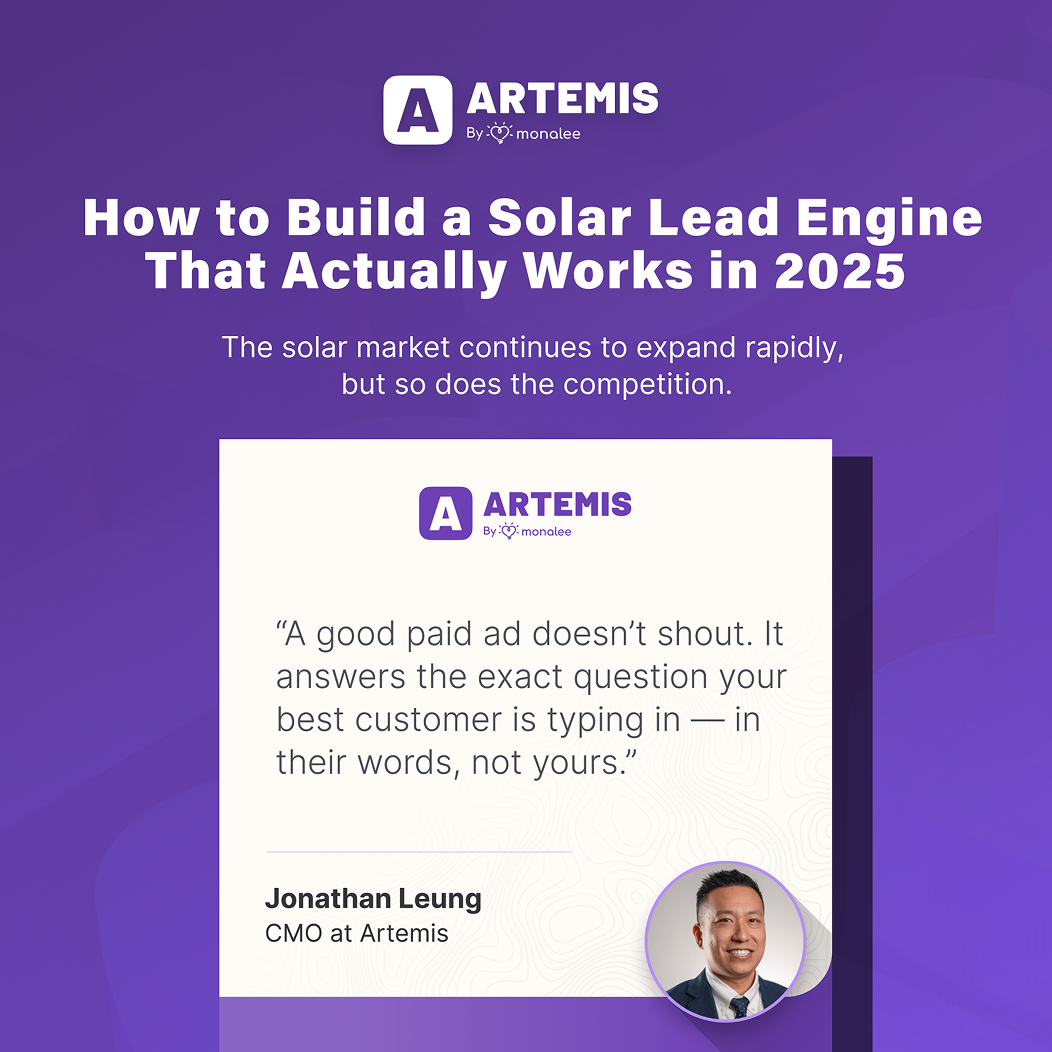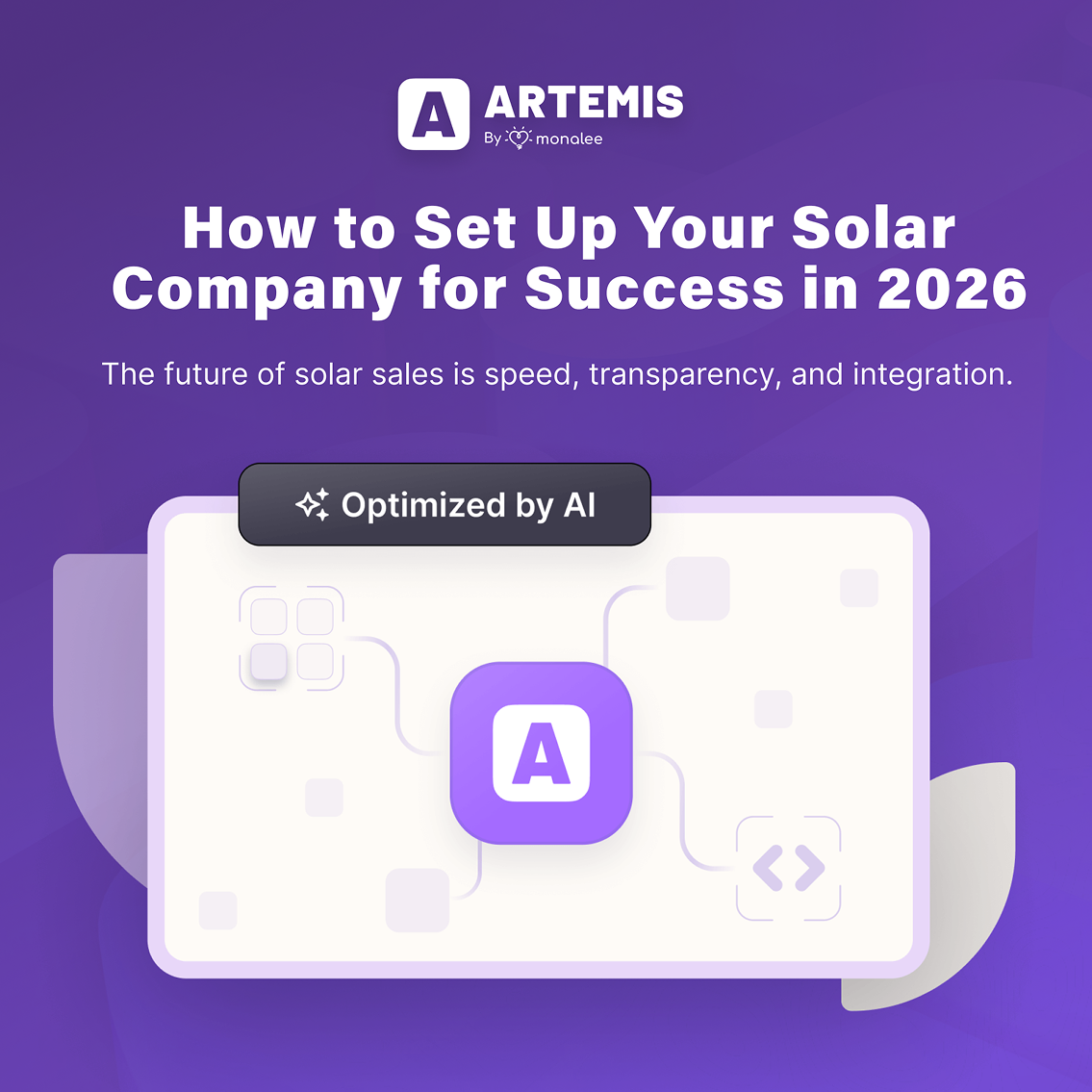The solar market continues to expand rapidly, but so does the competition. In nearly every region, new installers are entering the field, driving up both advertising costs and customer expectations. As a result, the average cost of an exclusive solar lead has risen significantly since 5 years ago.
For startups, that number can stall growth before it starts. For established firms, it erodes profit margins and limits reinvestment. To compete sustainably, solar companies must rethink how they build and manage their sales pipeline.
“You can’t build a growth engine on guesswork. Whether you’re buying or generating leads, your system needs to be repeatable, measurable, and rooted in your customer’s reality.”
— Jonathan Leung, CMO at Artemis
Let’s explore what a modern, reliable solar lead engine looks like in 2025 and how the most successful companies are designing systems they can truly own.
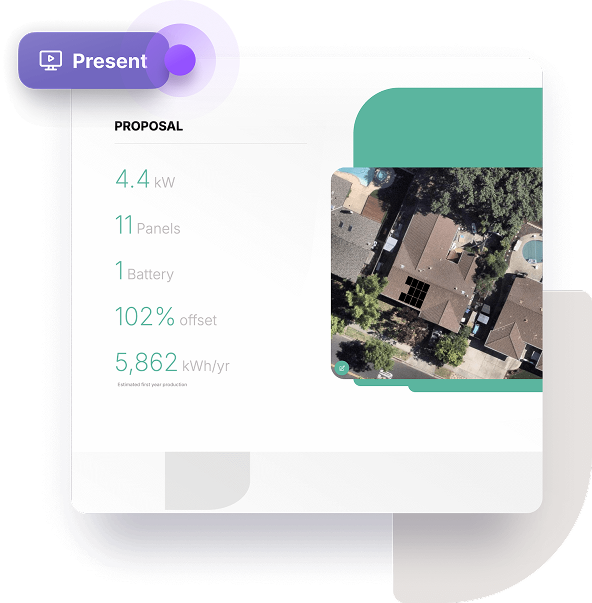
Rethinking the Source of Your Leads
Most solar companies rely on a mix of lead generation strategies. Some purchase leads from third-party providers, while others build their own systems to generate leads directly. Both options have merit, but they function very differently and come with distinct tradeoffs.
Purchasing leads offers speed and simplicity. With a reputable vendor, it’s possible to connect with homeowners who have already expressed interest in going solar. Tracking ROI is straightforward since each lead has a direct cost, and setup is minimal. This approach is especially useful for testing demand in new markets or territories.
However, the drawbacks are hard to ignore. Purchased leads are often shared among multiple companies, making the competition immediate and aggressive. Many leads have already gone cold by the time they reach your sales team. And without fast conversion rates, the costs can quickly become unsustainable.
“If you’re going to buy leads, make sure you purchase exclusive leads or make sure that you’re the first to get into contact with the homeowner.”
— Jonathan Leung
Building your own pipeline requires more effort and resources up front, but it gives you full control over the customer journey. You craft the messaging, manage the experience, and retain all the data. Over time, this leads to lower acquisition costs and more engaged prospects. People who discover your brand through content or search tend to arrive with a clearer understanding of your offer and often a higher intent to buy.
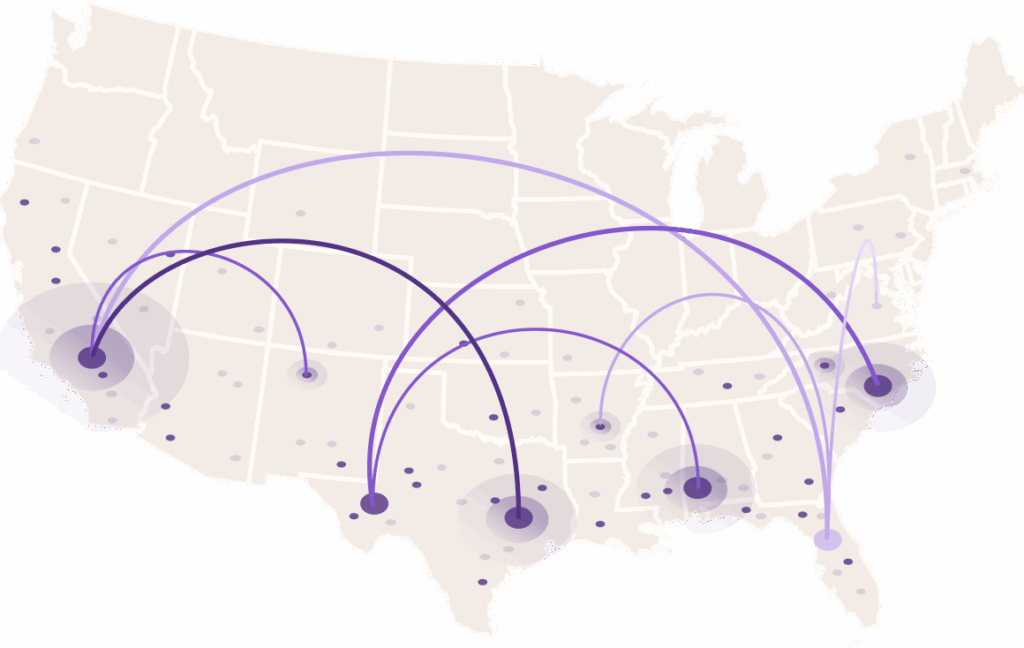
Clarify Exactly Who You’re Targeting
Every high-performing lead engine starts with crystal-clear customer understanding. Without it, marketing efforts tend to attract the wrong people or generate clicks that never convert.
Take the time to define detailed buyer personas. Ask yourself what your ideal customer truly wants. Are they motivated by lower electric bills, or do they value energy independence? What part of the country are they in, and what incentives apply to their area? How do they research solar solutions, and what questions do they typically ask before booking a consultation?
This is where your existing data becomes invaluable. Review CRM notes, analyze sales calls, and study tools like Google Trends and U.S. Census data to identify behavioral patterns and decision drivers. Ground your marketing efforts in actual insight, not assumptions.
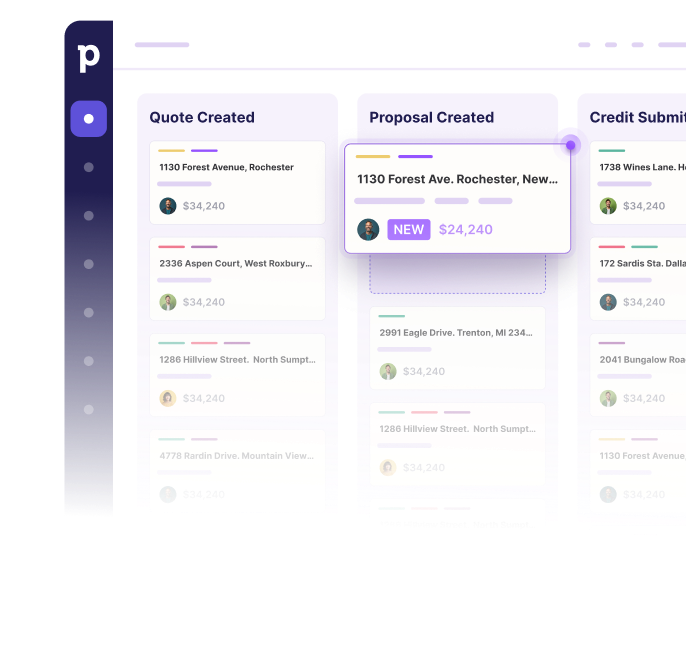
Build Trust Through Purposeful Content
Once you understand your audience, every aspect of your marketing becomes more effective. Content is no longer just a box to check, it becomes a tool to educate, prequalify, and build trust.
The goal isn’t to flood the internet with fluff, but to provide thoughtful answers to the questions your customers are already asking. Great content helps homeowners see you as a trusted expert before they ever speak with a rep.
Focus your efforts on educational articles, downloadable guides, brief explanatory videos, and authentic case studies. When executed well, these assets nurture prospects, build brand credibility, and enhance visibility across search engines and social media.
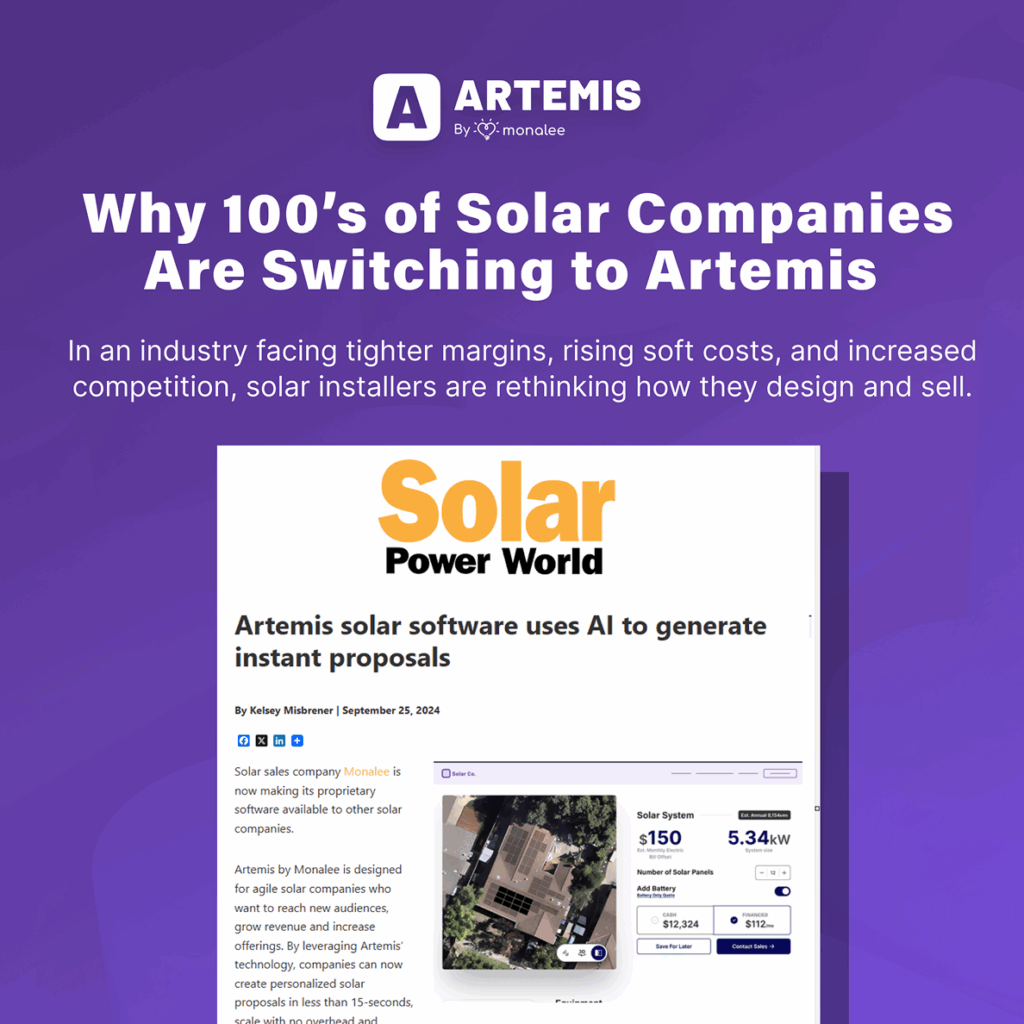
Run Paid Ads That Align with Buyer Intent
Paid advertising remains one of the fastest ways to generate leads, but only when it’s done strategically. Too many companies waste thousands chasing broad, expensive keywords that never deliver qualified traffic.
Instead of general terms like “solar installer near me”, focus on search phrases that signal purchase intent and geographic specificity. For example, “solar battery backup in Austin” or “zero down solar California” often attract better-fit customers and lower cost per click.
Monitor your campaigns closely. Use tools like Google Ad Auction Insights to understand where your competitors are investing. If a campaign hasn’t driven results within 60 to 90 days, pause it and reallocate budget to what’s working. And remember that discovery is happening everywhere your best customers might find you through Facebook, YouTube, or Instagram, not just Google.
“A good paid ad doesn’t shout. It answers the exact question your best customer is typing in — in their words, not yours.”
— Jonathan Leung
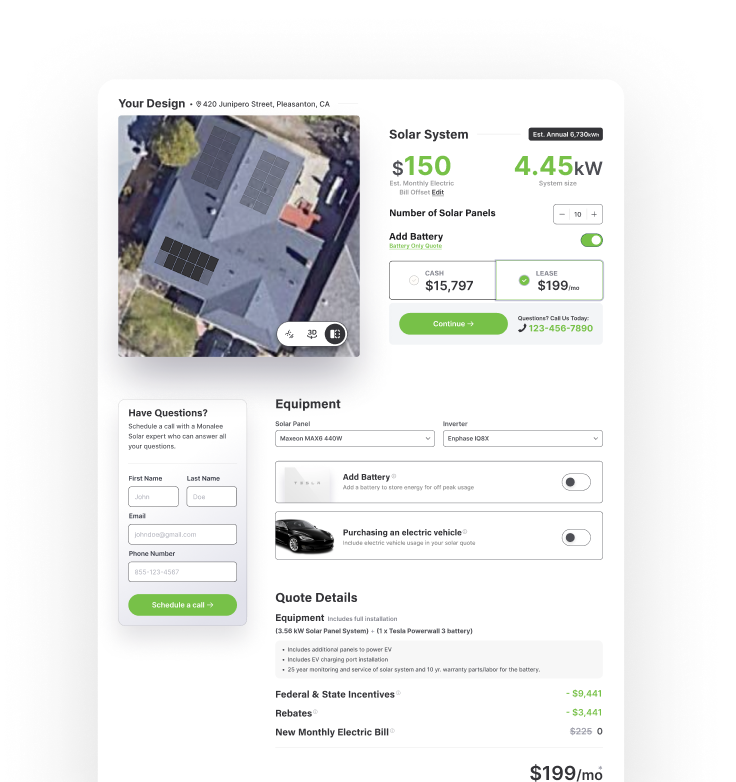
Lay the Groundwork for Sustainable Organic Growth
Search engine optimization takes longer to show results than paid advertising, but the returns are longer-lasting and more cost-effective over time. A well-optimized site and content library can generate qualified leads for months or even years after publication.
Begin by identifying long-tail keywords that reflect buyer intent and include geographic relevance. Create helpful, easy-to-read content around those topics. Invest in local SEO strategies like Google Business Profile optimization and backlinks from trusted industry or regional websites.
Avoid manipulative tactics like keyword stuffing or spammy link exchanges. Search engines reward websites that offer real value, clear navigation, and helpful answers.
“Search engines reward relevance and clarity. The more you behave like a helpful guide, the higher you’ll climb.”
— Jonathan Leung

Use Social Media to Attract, Not Just Announce
Social media isn’t just for brand awareness—it’s a meaningful lead generation channel when used with intention. But success requires more than posting about promotions.
Start by offering real value. Answer questions your audience is already asking. Share behind-the-scenes project insights. Engage in local community groups where people are actively discussing home energy costs and upgrades. And make sure every social profile has clear calls to action and easy ways to reach your team.
Simple video content can dramatically increase engagement. Even without professional production, platforms like Facebook and YouTube reward authenticity and clarity.
Own the Entire Pipeline—Not Just the Top
There’s no single channel or tactic that guarantees growth. But a thoughtfully layered lead engine built on trust, helpful content, smart targeting, and customer insight can deliver consistent results over time.
If you’re currently buying leads, use that data to inform your content and advertising. Gradually invest in the systems that give you more control and better margins. And continue testing. Every market and customer base is different, and the key to sustainable growth is finding what works in yours.

Ready to Own Your Lead Engine?
If you’re ready to stop chasing leads and start building a pipeline you control, Artemis can help. We equip solar companies with the tools they need to generate, nurture, and close more deals faster.
Book a demo here

